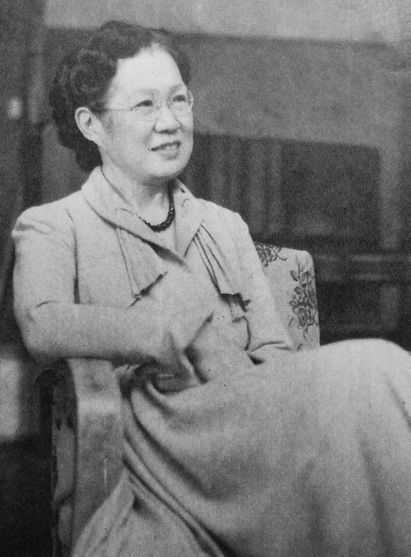 | ||
The singing voice of Japan (Japanese: 日本のうたごえ, Nihon no Utagoe / うたごえ運動, Utagoe-undō) is the name of a social and political movement that emerged after World War II in Japan and based on musical and choral activities of the working class of the entire nation. On the ideological position of communism or democratic socialism, activists of the movement organize choral circles in factories, in schools and in their residential areas. The movement reached its peak in the years 1950–60. Japanese singer Akiko Seki (Japanese: 関鑑子) is generally regarded as the founder of the Singing Voice of Japan.
Contents
- History
- Musical repertoire and organization
- Origin of the Hiragana script for the name of the movement
- Relationship with the Japanese Communist Party
- Episode of a Minister of Finance who tried to show his cultural competence uttering the name of the movement
- Personalities and historical activists
- References
History
Musical repertoire and organization
The repertoire of the movement consists mainly in revolutionary songs and those of the working class of different nations. Among registered members of individual committees (distinguished by region, industrial union, and other criterion) of the singing voice of Japan is favored to create new songs and choral pieces in the genre suited to the needs of their group. According to the program adopted in 2013, the National Council of the singing voice of Japan aims the objective to include 500 units and choral circles allover the national territory of Japan.
Origin of the Hiragana script (うたごえ) for the name of the movement
Traditionally, the two initial words of the movement's official name Singing Voice are not expressed in Kanji (Japanese: 漢字) as would be standard today, but in Hiragana (Japanese: 平仮名) that is: うたごえ (Utagoe written in Hiragana) instead of 歌声 (the same in Kanji). And at least since the first national Festival of the movement in 1953, its title text was written in Hiragana: The singing voice is the vitality of peace - The Singing Voice of Japan 1953 (Japanese: うたごえは平和の力 - 1953年日本のうたごえ). Concerning the origin of such a particular script, Masamitsu Kiyomiya (清宮正光) who was one of the founding members of the Choir of the Communist Youth League of Japan, recalled the moment of publication of the first choir organ Utagoe (June 1949) in these terms:
However, even after the first issue of the choir organ, the script for the Japanese word Utagoe in Kanji (歌声) and one mixed with Hiragana (歌ごえ) were sometimes used by authors of books or periodicals concerning The Singing Voice of Japan, while an exclusive formalization of Hiragana script (うたごえ) has never been imposed by any official organization of the movement. A very remarkable example of the graphical oscillation would be the autograph of Akiko Seki dedicated to the national Festival of December 1962, in which she wrote one of the movement slogans The singing voice is the vitality of peace (Japanese: うたごえは平和の力, Utagoe wa heiwa no chikara) using mixed script of both Kanji and Hiragana for the word Utagoe, precisely such as: 歌こえ [sic].
Relationship with the Japanese Communist Party
In accordance with the slogan Let's sing for the struggle of the working class (Japanese: うたは闘いとともに, translit. Uta wa tatakai to tomo ni), activists of the movement have composed many songs to encourage workers protest against illegal discrimination of their employers. In the 1960s, instruction of militants of the movement and continued improvement of their ideological, political and artistic quality were considered important means of cultural policy by the Japanese Communist Party (Japanese: 日本共産党, translit. Nihon kyōsantō). Nowadays (2016), the only group that is active and explicitly dedicated to the support of JCP is Choir of JCP-fans (Japanese: JCPファン雑唱団, translit. JCP fan zassyōdan), established in 2011 in Kyoto by veteran activists of the movement and directed by Tadao Yamamoto, composer, accordionist, choir director and an ordinary member of the National Council of The Singing Voice of Japan: the choir witnesses the historical connection calling itself by the acronym of English official name of the party. Its repertory and artistic activity are strongly linked in the movement, and in various cultural events organized by the Party, the Choir of JCP-fans appears as an element among the joined choirs of the volunteer singers of The Singing Voice of Japan.
Notable concerts and performances of the Choir:
Episode of a Minister of Finance who tried to show his cultural competence uttering the name of the movement
In 1963, during a discussion in the Budget Committee of the House of Councillors of Japan (Japanese: 参議院予算委員会) around taxes to impose on entry tickets to theaters, Gorō Sudō (Japanese: 須藤五郎), a member of the Japanese Communist Party and militant of The Singing Voice of Japan, asked Kakuei Tanaka (Japanese: 田中角栄), Minister of Finance at the time, if he knew of the existence of an workers' association of concert goers. To such a question, Minister Tanaka had to answer: "I do not know well about it". So Sudō recommenced his speech but the Minister who listened for a moment the continuation of the speech interrupted Sudō, uttering: "The Singing Voice..." (Japanese: うたごえ..., translit. Utagoe...), then Sudō replied: "Not The Singing Voice of Japan. I am speaking of an association of music listeners. The Singing Voice of Japan is a movement for singers",.
